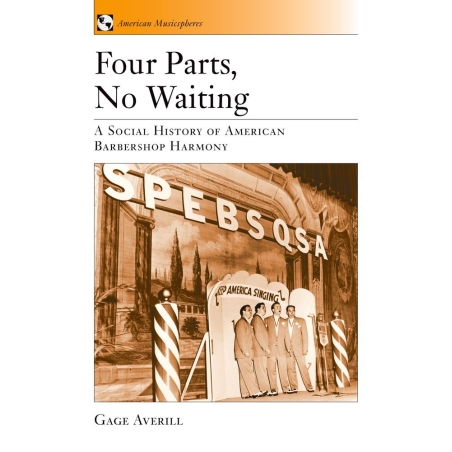Four Parts, No Waiting investigates the role that vernacular, barbershop-style close harmony has played in American musical history, in American life, and in the American imagination. Starting with a discussion of the first craze for Austrian four-part close harmony in the 1830s, Averill traces the popularity of this musical form in minstrel shows, black recreational singing, vaudeville, early recordings, and in the barbershop revival of the 1930s. In his exploration of barbershop, Averill uncovers a rich musical tradition--a hybrid of black and white cultural forms, practiced by amateurs, and part of a mythologized vision of small-town American life.
CONTENTS
Preface: I Don't Know Why (I Love You Like I Do)
Introduction: Past Perfect
1. A Little Close Harmony: A medley of nineteenth-century harmony
2. The golden era: Quartets, show business, & the music industry
3. The lost chords: The early barbershop revival
4. On Main Street, U. S. A.
5. Romancing the Tone: Song, sound & significance in barbershop harmony
Conclusion Afterglow
Appendix: Glossary
Bibliography
| Series | American Musicspheres |
|---|


